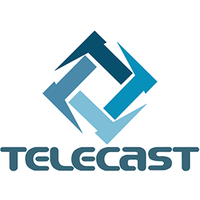
Electronic Program Guide (EPG)

Overview
TELECAST Electronic Program Guide (EPG) system complies with DVB standard and the national standard draft on SI information, providing EPG value-added service based on the cable TV network. The system takes network and database as cores, supporting network multi-subscriber editing. EPG adopts several segmentations of automatic configured SI (Service Information) which are used in digital TV receiver, according to the definition in MPEG-2 and DVB: SDT (Service Description Table), NIT (Network Information Table) and EIT (Event Information). Extract the program list and parameters from these segmentations, and send to digital TV subscriber for display. It is a tool which makes the subscriber receive and choose digital TV programs easily.
With this EPG system, it is convenient for cable TV staff to edit and broadcast EPG information and arrange one week program information, which includes all channels, starting and ending time of program, program description, encryption or non-encryption, charge modes, etc. EPG receiving software platform at the receiving end will finish EPG information reception, after receiving, analyzing and processing the system service information (SI). Subscriber can scan the program guide of a period, and switch to their favorite program. They can also search favorite program from electronic program list by date, program types and other information.
TELECAST EPG system head-end is composed by three parts: Cable TV broadcasting program planning system (Schedule Editor), program information storage and management system (Schedule Administrator), and electronic program guide broadcasting system (Schedule Player). Separation of program making and broadcasting is an important part of modern cable TV network head-end production. It has relatively separated production and broadcast, while adopt database support of enterprise customer/server mode can improve the efficiency of program producing and editing. Broadcast system extracts the required data from database automatically, and process. The producing staff just needs to store this data information into database.
The Functional Features of EPG System
True business EPG system; take network and database as cores; support network multi-user editing.
TELECAST EPG system is composed by three parts:
broadcasting program planning system (Schedule Editor), program information storage and management system (Schedule Administrator), and electronic program guide broadcasting system (Schedule Player). Separation of program making and broadcasting is an important part of modern cable TV network head-end production. It has relatively separated production and broadcast, while adopt database support of enterprise customer/server mode can improve the efficiency of program producing and editing. Broadcast system extracts the required data from database automatically, and process. The producing staff just needs to store this data information into database.
It is convenient and intuitive for the staff of TV station to edit and broadcast EPG information and arrange one week program, which includes the program starting and ending time of all channels and TV stations, program description, encryption or non-encryption, charge modes, etc.
The interaction of client-end editing system and database server
Run EPG headend production program in the client PC. When editing and producing EPG information, user can store the edited channel, TV station, program information into EPG database server at any time, and can read the required information in database server. In addition, control the access (store and read) rights of different users. The editorial staff edits and stores EPG information into database server at any time, and play server directly reads EPG relevant information from the database server, so EPG system can forecast, introduce and scan the program (the current broadcasting program) dynamically.
The interaction of EPG play server and EPG database server
After starting to play, EPG play server reads the relevant EPG information from the EPG database server.
The management and maintenance of program information database
Provide users with the management tools of program information database, with main functions of data records reading, writing, storing, deleting, modifying, adding, scanning and inquiring.
Support moving EPG generation
According to the changes of program, the system can automatically update and generate new EPG information while the program is sending.
Moving output code rate control
Play server provides code rate control tool, which is able to control the rate of broadcasting in real time.
Support EPG data accessing to multiplexer
The broadcasted EPG code rate can be divided into multiple channels by ASI distribution amplifier, and input into different multiplexers.
Support SI information import and management accessed by different modes, such as backbone, satellite, etc.
General Properties of EPG system
1) Comply with the national standard of PRC and relevant industry standards made by General Office of Broadcasting and Television; comply with GY/Z 174-2001 “Specification of Digital Television Broadcasting Service Information”, GY/Z 174-20012 “Specification of Electronic Program Guide Information” and standard ETS 300 468.
2) Be able to generate and publish complete SI & PSI tables; comply with the relevant requirements of the domestic standards.
3) This system is independent. It will not affect the running of other systems when there are some problems in EPG system or EPG is updating.
4) Adopt both Chinese and English interfaces, with clear functions, which is easy to use.
5) Be able to edit and process the required list quickly and intuitively. With perfect data storage capacity; support flexible import and export modes; simplify the production.
6) Adopt modular structure in system design, which is benefit for the expansion of service and function.
7) The interface is designed with simple menu, which is easy for user to operate.
8) With the upgrade and expansion of internet, the system can be upgraded and expanded smoothly.